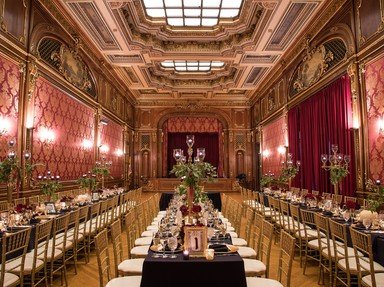Quiz Answer Key and Fun Facts
1. Apollo 17 was the eleventh manned space mission in the NASA Apollo program. The final two astronauts left the Moon surface on December 14, 1972. Which crew member was the last to have walked on the moon from this mission?
2. A nationwide three-minute silence was observed at the exact time (8.00AM) that this person was hanged on Friday 3 February 1967. A small-time criminal, with no history of violence, he was convicted of murder and executed at Pentridge Jail Melbourne. It was to be the last judicial execution in Australia prior to the abolition of capital punishment in the country in 1985. Who was the condemned man?
3. They were regarded by many at the time as the greatest group of American male entertainers to grace the Las Vegas stage. Frank Sinatra, Sammy Davis, Jr., Dean Martin, Joey Bishop & Peter Lawford were known as The Rat Pack. They ruled Las Vegas and Hollywood during the 1950s and 1960s. Who was the last surviving member of the Rat Pack, aged 89, to die on October 17 2007?
4. This great grandson of Queen Victoria was murdered by an IRA bomb while sailing near his holiday home in County Sligo, Ireland, on 27th August, 1979. He is also remembered as the last British Viceroy of India. Can you name this person who oversaw the creation of the independent states of India and Pakistan?
5. The Imperial Victoria Cross was awarded to 96 Australians. The Victoria Cross of Australia was introduced as part of the Australian honours system in 1991 and replaced the Imperial Victoria Cross. What is the name of the last Australian recipient of the Imperial Victoria Cross for his actions in Vietnam in 1969?
6. Throughout the second millennium AD, it was important for an English king to be seen leading from the front on the battlefield. Which regent was the last British monarch to take part in a battle, before the end of the millennium, when he commanded the British Army at the Battle of Dettingen in 1742?
7. The television series Seinfeld commenced on American TV on the 5th July 1989, with the last episode airing on 14th May 1998. In the final scene in the prison which actor was the last to speak with the words "See you in the cafeteria"?
8. This lawyer-jurist stands out from the other signatories on the American Declaration of Independence in a variety of ways. He was the last to pen his signature to the Declaration, sometime after January 18, 1777. He was also the only signatory to be the chief executive of, and concurrent officeholder in, two States. Furthermore, he numbered among those who also subscribed to the Articles of Confederation, and he served a long tour in Congress. Who was this representative from Delaware?
9. He was affectionately known as "The Fourth Stooge" and was only one of two actors to have worked with all the other six Stooges. This actor, under contract to replace Larry in the Stooges act, would join Moe and Curly-Joe in a feature film planned for 1974 or 1975. But with Moe's death in 1975, the film was never made. Who was last of the "Three Stooges" ("Harry") to die, at age 83, on January 16 1998?
10. The last living recipient (and nominee) of an individual award at the first Academy Awards ceremony in 1929, died aged 77 on September 14 1984. Who was this actor or actress?
Source: Author
pjjc
This quiz was reviewed by FunTrivia editor
Snowman before going online.
Any errors found in FunTrivia content are routinely corrected through our feedback system.
